#john berwick
Text

youtube
#podcast#podcast moments#best of 2023#2023 in review#2023 podcast moments#movie podcast#tv podcast#television podcast#tv show podcast#television show podcast#tv review podcast#movie and tv podcast#film podcast#tv recap podcast#television recap podcast#movie review podcast#pop culture podcast#david allen#john berwick#kyle bridger#gearomatic#best of#favorite moments#2023 favorite moments#2023 rewind#Youtube
0 notes
Text

Predator: The Last Hunt (2024) Cover
8 notes
·
View notes
Text

Bloodthirsty Butchers (1970)
#blood thirsty butchers#john miranda#annabella wood#berwick kalrer#1970#1970s movies#andy milligan movies#horror movie poster
28 notes
·
View notes
Text
03. Precious

Going back to the cabin in the trees
Going back to the creek beneath the hill
There's a girl who used to live there when I left
But I doubt she'll be waiting for me still
Never thought I'd be gone so many years
When I left, always planned that I'd return
But time slips away before we know
That's just one more lesson that we learn
A lot of people have said it and so will I. Give me one full novel on just the Ranger Corps and their traditions and their Gatherings and I would die a happy person.
#ranger gathering 2022#rangers apprentice#john flanagan#will treaty#halt o'carrick#crowley meratyn#gilan davidson#pritchard#berrigan#samdash#leander#berwick#farrel#jurgen#egon#norris#madelyn altman#ranger corps#was going to draw berrigan’s gitarra but it didn’t work out
64 notes
·
View notes
Audio
All the way from the carboniferous period, it's THE MONSTER OF PIEDRAS BLANCAS (1959)!
Directed by Irvin Berwick, this flick is made up of Universal Pictures' laid off staff and disgruntled workers on a CREATURE FROM THE BLACK LAGOON template.
Context setting 00:00; Synopsis 12:56; Discussion 29:48; Ranking 43:34
#podcast#horror#classic horror#the monster of piedras blancas#creature from the black lagoon#universal pictures#mole people#this island earth#metaluna mutant#irvin berwick#haile chace#jack kevan#les tremayne#forrest lewis#john harmon#pete dunn#jeanne carmen#don sullivan#philip lathrop#george gittens#vanwick productions#diplovertebron#gill-man#piedras blancas#low budget uncanny valley
5 notes
·
View notes
Note
⅀
Slept through his sister getting poisoned and dying and now can’t go to New Year’s Eve parties.
2 notes
·
View notes
Text
HORROR: A TRUE TALE by John Berwick Harwood
Horror: A True Tale is a short story written by John Berwick Harwood in 1861 for Blackwood’s Edinburgh Magazine and is a perfect example for a classic Christmas Ghost Story from Victorian times.
Horror: A True Tale is a short story written by John Berwick Harwood in 1861 for Blackwood’s Edinburgh Magazine and is a perfect example for a classic Christmas Ghost Story from Victorian times.
I WAS but nineteen years of age when the incident occurred which has thrown a shadow over my life: and, ah me! how many and many a weary year has dragged by since then! Young, happy, and beloved I was in…
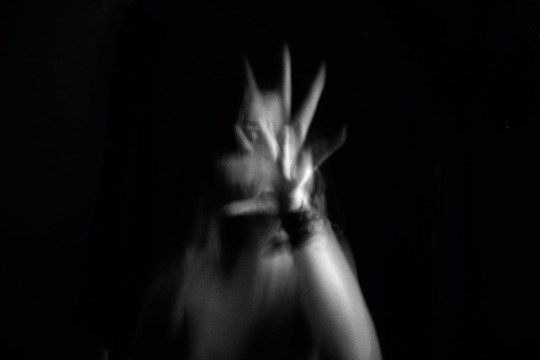
View On WordPress
#christmas#christmas short story#gothic fiction#horror: a true tale#john berwick harwood#short stories
0 notes
Text
Clockmakers & Watchmakers of Scotland, 1453-1900 :: Donald Whyte
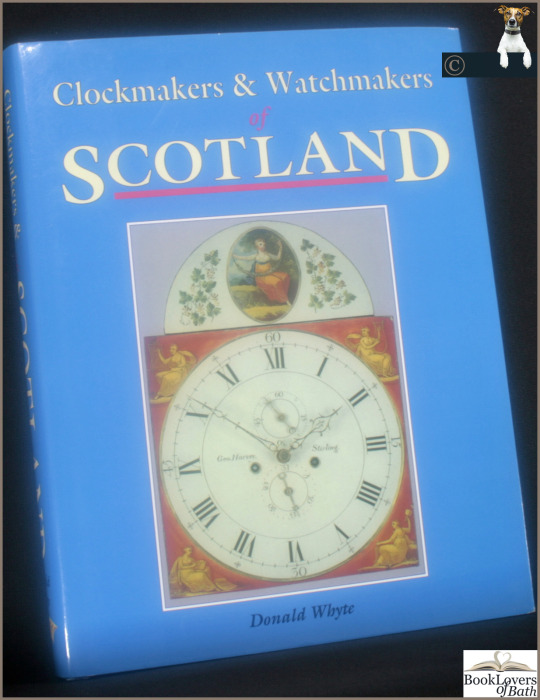
View On WordPress
#0-9540-5258-7#andrew dickie#berwick tweed#books by donald whyte#clockmakers#edinburgh watchmakers#first edition books#george lumsden#grandfather clocks#historic scotland#history horology#history scotland#history timepieces#history watch makers#horological history#humphry mills#john smith pittenweem#scots clock making#scots watch making scots#scottish chronometers#scottish clock making#scottish clock repairs#scottish longcase clocks#scottish watchmakers
0 notes
Text
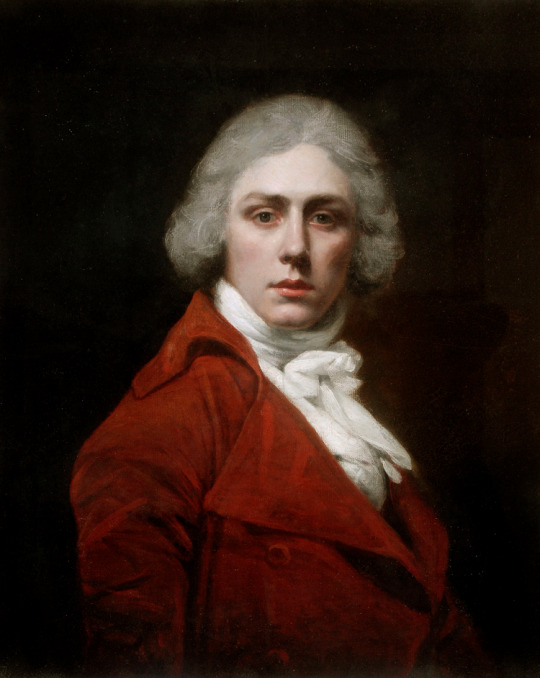
ab. 1807 John Opie - John Carpenter, of Mount Tavy
(Berwick Museum & Art Gallery)
352 notes
·
View notes
Text


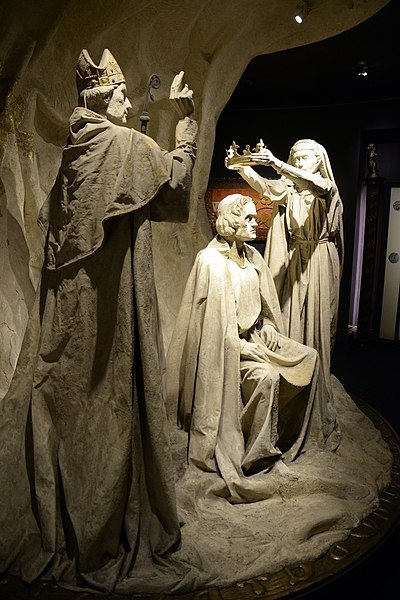
On the freezing morning of March 25 1306, Robert the Bruce was crowned King of Scots at Scone where a circlet of gold was raised and placed upon his head.
He was crowned in the presence of at least three bishops and four earls with the coronation, which followed the murder of John Comyn, Bruce’s main rival to the throne, a formal and solemn affair.
The King was draped in “kingly robes and vestments” which had been hidden away by Robert Wishart, the Bishop of Glasgow, until “this longed for day”, according to Ronald McNair Scott in his book Robert the Bruce, King of Scotland.
“(They) were brought out by the old man and set upon King Robert, and a circlet of gold was placed upon his head while the great banner of the kings of Scotland with its lion and scarlet lillies, that had lain so long concealed, was planted behind his throne,” the author wrote.
The Bishops of Moray and St Andrews were also in attendance as well as the Earls of Atholl, Lennox, Menteith and Mar. Absent, however, was the Earl of Fife, who held the hereditary right to crown the kings of Scotland.
Still a youth and held in England as a ward of court in 1306, he unable to attend the coronation and perform his hereditary duties. But his sister, 19-year-old Isabella MacDuff, the Countess of Buchan, went against the will of her husband - a loyal supporter of Edward I and close kinsman of the murdered John Comyn - by taking up the hugely symbolic role during the coronation.
“To her the call of Scotland and her youthful hero-worship of Bruce proved greater than her wifely duty,” Scott wrote.
“Seizing her husband’s finest horses, she rode with the upmost speed to Scone to act on her brother’s behalf” he added.
Isabella arrived a day too late but but King Robert took part in a second coronation ceremony, 48 hours after the first,so that the ancient tradition may be preserved.
“The golden circlet was lifted once more and placed upon the brow of Robert Bruce, Earl of Carrick, Lord of Annandale, King of Scots.”
Following the coronation, Edward I sent soldiers into Scotland to hunt down the new king. Robert fled and, as the manhunt continued across Scotland, the King’s brother - Nigel de Brus - and other supporters were discovered.
They were taken to Berwick-Upon-Tweed where the men were judicially condemned, hanged, drawn and beheaded.
Along with other members of the family including King Robert's wife, Elizabeth, Isabella was captured and sent to the Borders town. There, she was confined to a cage that was hung from a tower at Berwick Castle as a warning to others. She remained in the cage for four years, according to accounts.
40 notes
·
View notes
Text
Letter from John of Lancaster, warden of the East March of Scotland, warning the king and council of his plight, 1406
May it please my very honoured and redoubted lord the prince and other very honourable and very wise lords of the king’s council…to consider the articles under written touching the state and governance of the Lord John, the king’s son, and of the East March towards Scotland committed to him in ward, and to ordain for him by your wise discretions good, speedy, and convenient remedy; or otherwise if any peril, grief, or harm should result in default of such governance, which God forbid, that the warden should be held excused and fully discharged of responsibility for it.
First, may it please you to consider the distress which both the soldiers and the burgesses and inhabitants in the town of Berwick have suffered by the burning and destruction which have lately happened there, as is well known to your high discretions; nevertheless the same soldiers are in arrears with their pay, and have not received a penny since last Easter, so that their arrears amount to the sum of £4,430 17s 9d, and now victuals are becoming scarce and begin to be dear in these parts, so that they cannot have any provision for their sustenance without payment. Thus they experience distress on distress, which they cannot in any way endure without being furnished with good and ready payment in this situation.
Also, a great part of the walls as well of the town as of the castle are ruined and fallen to the ground, some from feebleness, some by force of the destruction by the king’s guns at the time when the castle was held against him by way of rebellion, and more sections in various parts became in a short time decayed, in so much that no soldiers, burgesses, or others of any estate dare or wish to stay there for fear of the enemy, unless speedy repairs are undertaken.
Also, may it please you to consider how the truce recently made on these marches will endure only until the feast of Easter next coming, and that the warden must have notice in time how and under what security these marches shall be governed after that, whether under truce or war, so that the lieges of the king in these parts can be put in security of their governance without loss or damage by the enemies of Scotland….
And moreover if war must come at that time, may sufficient ordinance be made by your wise discretions in time for the honour of the king our sovereign lord father and of his realm and for the safeguard and surety of the marches.
Also from the feast of Easter next following until the feast of Michaelmas after that, for the truce—£2,415 8s 10½d.
Sum total—£7,246 6s 7½d.
Source: A. R. Myers, ed. English Historical Documents: 1327-1485 (Routledge 1969), translated from S.B.Chrimes, "Some Letters of John of Lancaster as Warden of the East Marches towards Scotland", Speculum, vol 14, no. 1 (1939)
3 notes
·
View notes
Text
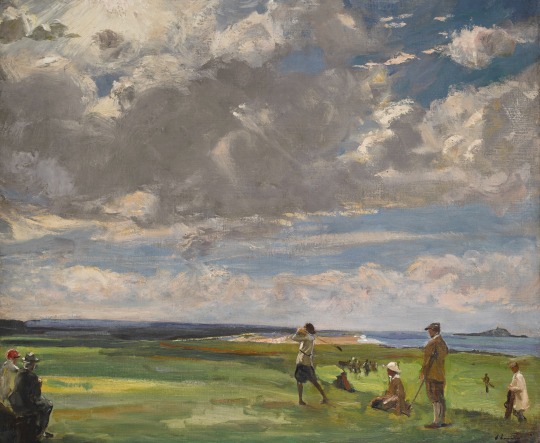
Sir John Lavery, The Golf Links, North Berwick, 1921
13 notes
·
View notes
Text
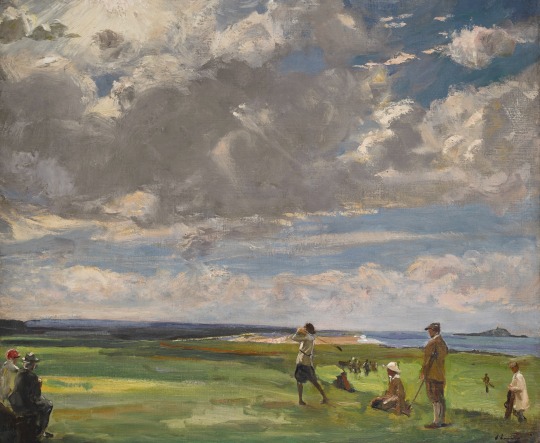
SIR JOHN LAVERY R.A, R.S.A (1856 – 1941)
THE GOLF LINKS, NORTH BERWICK
Guy Morrison
17 notes
·
View notes
Text
Interview under the cut :-)
Penelope Wilton: ‘I was never a starlet – I wasn’t cast because of a pretty face’
Ahead of her stint in The Unlikely Pilgrimage of Harold Fry, Penelope Winton speaks to Fiona Sturges about her 55-year career in the industry
In a career spanning nearly 55 years, Penelope Wilton has cornered the market in quiet disappointment. As Anne Bryce in the popular 80s sitcom Ever Decreasing Circles, her eyeballs were permanently rotating at the childish antics of her on-screen husband Martin, played by Richard Briers, while in the film Clockwise she was the long-suffering spouse of John Cleese’s calamity-prone headmaster. In Alan Bennett’s Talking Heads series, she played a housewife who couldn’t bring herself to tell her husband she didn’t want to move to Marbella.
In her new film, The Unlikely Pilgrimage of Harold Fry, she plays another wife bottling up her feelings. Wilton is retiree Maureen, whose husband, Harold (Jim Broadbent), receives a letter from an ex-colleague informing him that she is dying. Overcome with unexplained guilt, Harold pledges to travel on foot from his home in south Devon to Berwick-upon-Tweed in Northumberland (500 miles, give or take), where his friend is in a hospice, leaving Maureen alone at home.
“First of all, she thinks he’s mad, and then gets very angry, and then very anxious and upset,” says Wilton. “But slowly she starts to recognise how much her marriage means to her, which she hasn’t in the immediate past because this sadness has thrown them apart.” The sadness relates to their late son, David (Earl Cave), who struggled with drug abuse and who, we learn through flashbacks, died years earlier from suicide. Unlike Harold, Wilton’s Maureen isn’t given the catharsis of an epic journey. Instead, her devastation is conveyed through intense bouts of vacuuming and in clipped phone exchanges with Harold. “You never walk,” she tells him, indignantly. “The only time you walk is to the car.”
Wilton and I are talking on the phone: she doesn’t do Zoom and rarely does in-person interviews nowadays. Though she is never less than polite, I sense that, if she had her way, she wouldn’t do interviews at all.
Nonetheless, at 76, she is showing little sign of slowing down, and isstill averaging a movie a year: last year she reprised her role as Isobel Crawley, mother-in-law of Lady Mary, in the second Downton Abbey spin-off film, A New Era, while in 2021 she appeared in Operation Mincemeat as Hester Leggett, formidable head of the MI5 secretarial unit. She still does bits and pieces of TV, most recently appearing in Netflix’s After Life, where she played a widow sharing a graveyard bench with Ricky Gervais’s grief-stricken Tony. Add to that her distinguished career in theatre and it is no wonder that, in 2016, Wilton was made a dame for services to drama.
When I mention her ability to convey deep disappointment with the subtlest of expressions, Wilton bats away the compliment. “If I get a part that requires me to do that, then I’ll do that,” she says. “But it’s also the case that people don’t go around bursting into tears. Most of the time we try to stop the tears coming and we tend to apologise when emotion overtakes us. It’s an English trait. I have to say I don’t have that trait as a person, but a lot of people have grown up learning to hold their emotions in.” She adds that she is pleased to see younger generations being more vocal about their feelings. “It’s great that they’re not holding it all in, as I think that is unhealthy. This silent world that Harold and Maureen live in, it’s very sad.”
Wilton is known for keeping her private life private, often delivering a stock reply to prying interviewers about it being better if audiences don’t know “my inside leg measurement”. What is known is that she has been married twice: first to actor Daniel Massey, with whom she had a daughter before they divorced in 1984 (he went on to marry Wilton’s sister, Linda), and then to Ian Holm, her co-star on The Borrowers, whom she divorced in 2001.
Wilton says she became an actor “because I wasn’t very good at anything else, and I liked stories and storytelling”. Her father, a businessman, had no interest in the performing arts, but her mother, Alice Travers, had been an actor and dancer. Wilton began going to the theatre at 15 and quickly realised she would “prefer to be on the stage than in the audience”.
But it was Ever Decreasing Circles, one of the biggest sitcoms of its era, that made her famous and which, she says, “I enjoyed more than I can say. People still have a soft spot for it, and so do I. Ricky Gervais loved that series and that’s why he cast me in After Life and why he called my character Anne, as a homage.”Ever Decreasing Circles was at its height in the 80s, when industry sexism meant actresses were often faded out after reaching middle age, but Wilton endured. Was that through tenacity on her part, or luck? “It was probably a bit of both,” she replies. “By the time I began doing film and television, I was already [in my thirties]. But before that I was doing theatre, and the parts for women in the theatre were plentiful. But also, I wasn’t ever a starlet. I played real people. I wasn’t cast because of a pretty face.”
Wilton also attributes her longevity to her ability to get on with people (“I can count on one hand the people I’ve really disliked”), and to play close attention to scripts and go “not for the big parts but the smaller and often more interesting ones that might have one or two really good scenes. It’s a good thing to learn, not to think about the size of the role. A smaller role can change a career.” She once told the theatre critic Michael Billington that, when giving masterclasses, she would tell students to do less acting. Watch any number of Wilton’s performances, and it is clear what she means. “I’m not a fan of big acting,” she reflects now. “I have always found you can achieve just as much by showing less and being real.”
#i know she hates it but I love it that she has to make some much promo for harold fry :-D#penelope wilton#the unlikely pilgrimage of harold fry#downton abbey
7 notes
·
View notes
Text
The Renegade Ranger
read it on AO3 at https://ift.tt/n3J1SaP
by solarishashernoseinabook
After leaving Clonmel, Halt has three goals:
One, go to Araluen and become a Ranger.
Two, take down Baron Morgarath, who wants to dismantle the Ranger Corps completely.
And three, kiss Crowley Meratyn.
Words: 2251, Chapters: 1/?, Language: English
Series: Part 2 of The Royal Ranger
Fandoms: Ranger's Apprentice - John Flanagan
Rating: Teen And Up Audiences
Warnings: No Archive Warnings Apply
Categories: M/M
Characters: Halt O'Carrick, Crowley Meratyn, Duncan (Ranger's Apprentice), Rosalind Serenne, Morgarath (Ranger's Apprentice), Leander (Ranger's Apprentice), Berrigan (Ranger's Apprentice), Egon the Ranger (Ranger's Apprentice), Norris (Ranger's Apprentice), Lewin (Ranger's Apprentice), Jurgen the Ranger (Ranger's Apprentice), Berwick (Ranger's Apprentice), Samdash (Ranger's Apprentice), Farrel the Ranger (Ranger's Apprentice), Pritchard (Ranger's Apprentice), Abelard (Ranger's Apprentice), Cropper (Ranger's Apprentice), Baron Arald (Ranger's Apprentice), Original Characters
Relationships: Crowley Meratyn/Halt O'Carrick
Additional Tags: Autistic Halt, Alternate Universe - Canon Divergence, Series: The Early Years (Ranger's Apprentice), Demiromantic asexual Crowley, you won't believe how long it takes to get to the gay stuff in this one, Slow Burn, not much of a slow burn. more of a gentle toasting
read it on AO3 at https://ift.tt/n3J1SaP
6 notes
·
View notes
Photo
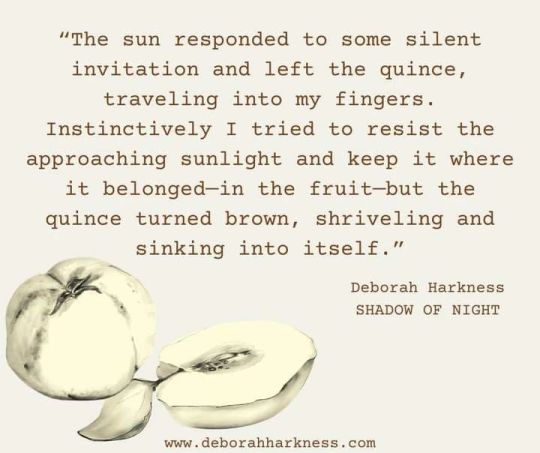
#Repost #DeborahHarkness FB page SHADOW OF NIGHT read along chapters 4-6 “It must have to do with Berwick,” Hancock declared. “Bloody witches. Always causing trouble.” “Berwick?” My pulse kicked up a notch. I recognized the name. One of the most notorious witch trials in the British Isles was connected to it.” -SHADOW OF NIGHT “There are almost as many theories about the causes of witchcraft trials as there are historians, but there is no question that witches made convenient scapegoats for human problems during the period of the witch-hunts. The changing whims of rulers and others in political power could also affect the status of witches. King James VI of Scotland had initially been tolerant of witches but changed his mind after experiencing terrible storms on the way back from Copenhagen with his new Danish queen in 1589. The Danes who were escorting the couple home blamed witchcraft, and trials were held in Denmark to punish the malefactors. James then set up his own tribunal in Scotland, which came to be known as the North Berwick Witch Trials. In the Berwick trials, officials arrested a young Scottish servant on suspicion of witchcraft in 1590. Under torture she named many others, including John Fian, a local schoolmaster; Agnes Sampson, a cunning woman (actually a weaver), healer, and midwife; and Barbara Napier, the widow of Earl Archibald of Angus….Witch trials took place in various European countries and in the American colonies from the fourteenth through the eighteenth centuries. It is difficult to know how many witches were executed. Modern scholars put the number at roughly forty to fifty thousand.” -THE WORLD OF ALL SOULS, p 61 #ShadowOfNightreadalong2022 #TheWorldOfAllSouls #SONch4 #SONch5 #SONch6 https://www.instagram.com/p/Ckv7i3ioy9t/?igshid=NGJjMDIxMWI=
4 notes
·
View notes